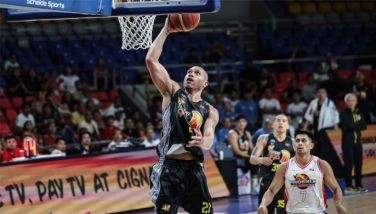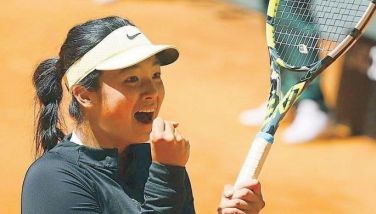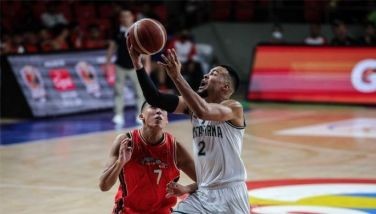Showing P-Noy sports is a priority
The headline in the Aug. 11, 2012 issue of the Sports section of one of the country’s broadsheets says it all in reference to the Philippines’ performance in the 2012 London Olympics: “SO WHAT ELSE IS NEW?; (BMX Cyclist Daniel) Caluag Caps Phl Olympic Debacle.”
What happened in London to the Philippine contingent from day one. The entire country however implored Divine Providence to favor the Philippines with a miracle by granting us at least one medal in the sport that we had the best prospect, boxing, and a possible podium finish in the relatively new discipline in cycling, BMX, through Caluag, a Fil-Am cyclist who was heralded as the only Asian qualifier in the BMX event in the Olympics.
As things turned out, our lone bet in boxing, Mark Anthony Barriga, failed to get past his Kazakh opponent, losing by a highly controversial decision which, in the dark world of Olympic boxing is not an uncommon occurrence for as long as one can remember. One of the lessons to be learned from this sad event is that if we are going to concentrate on boxing and put a lot of resources in it, our boys should be trained to really go for emphatic wins in international boxing tournaments. There is too much temptation judges from impoverished countries may find difficult to ignore.
Boxing, taekwondo, gymnastics, synchronized swimming and a great number of so-called “judged” sports are vulnerable to whimsical, arbitrary and amorphous scoring criteria. Kenya and Ethiopia have “solved” this problem focusing on a non-judged sport, athletics, particularly in the 5,000 and 10,000 meter runs and the marathon. The results are there for everyone to see (if the Olympic gold medal is the obsession and not the bigger goal of national health and wellness): these two countries have won 44 gold medals in the Olympics and world championships (Kenya, 26; Ethiopia, 18). In London, Ethiopia captured three gold medals while Kenya brought home two.
Over the long run however, if we really want to be taken seriously by the international sports community, we must undergo a thorough reevaluation of our sports programs. One of the starting point is the reevaluation of the Physical Education (PE) curriculum and integrating the agencies concerned with sports development through the dormant National Physical Fitness and Sports Development Council (NPFSDC) created by Executive Orders (EOs) 63 and 64 during the administration of then President Fidel V. Ramos.
We had long advocated this integration and now come sports officials saying that there has to be this integration between PE and elite sports. We’ve been advocating this for the last 23 years together with sports scholar-practitioner-Asian Games bronze medalist, Dr. Perry Mequi.
There seemed to be the proverbial light at the end of the tunnel with the signing by Pres. Ramos of EOs 63 and 64. Both EOs were however thrown into the waste basket by Philippine Sports Commission leaderships from 1996 onward who were most remiss in strategic planning and in creating a vision for Philippine sports. Now, we hear almost the same sports leaders crying out loud about the role of PE in elite sports development.
The neglect of sports also reared its ugly head in the way the Philippine Institute for Sports (PHILSPORTS) was similarly thrown into the waste basket by the then incoming PSC leadership in 1998 and their successors, present leaders included.
And now we hear of sports authorities talking about the need for sports science. That’s fine and a step in the right direction. But where will we get the sports scientists if we did not do anything at all to develop them and their discipline all these years. Do we import them again? We recommended, as early as 1998, that we take the sports science path following the directions indicated in the Master Plan for Philippine Sports (1996 to 2000) but no one paid heed.
What happened to the PHILSPORTS which was created in 1996 precisely to concentrate on, among others, sports science and help produce the sports scientists were now looking for? The PHILSPORTS was part of the Master Plan co-authored with the Australian Sports Commission (ASC) and the Australian Institute of Sports (AIS), two organizations responsible for Australia’s highly successful grassroots and elite sports program.
As we had stated in the Master Plan for sports, “the framework for an effective physical education and sports system is essentially in place in the Philippines.”But alas, we just don’t have the strategic frame of mind and sense to see how to put things together.
If we want to convince President Benigno Aquino III and our congressional leaders that sports deserves to be a priority, then we must prove to them that “Sports is an engine of development and not a mere by-product.” That is the challenge.
- Latest
- Trending































